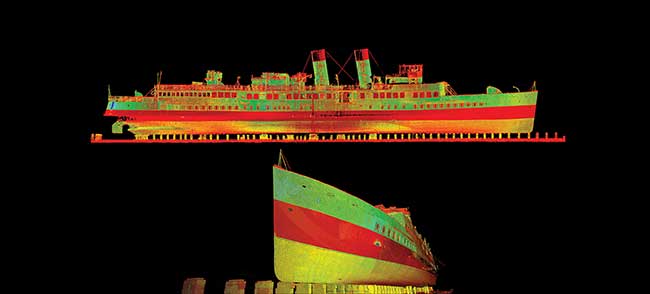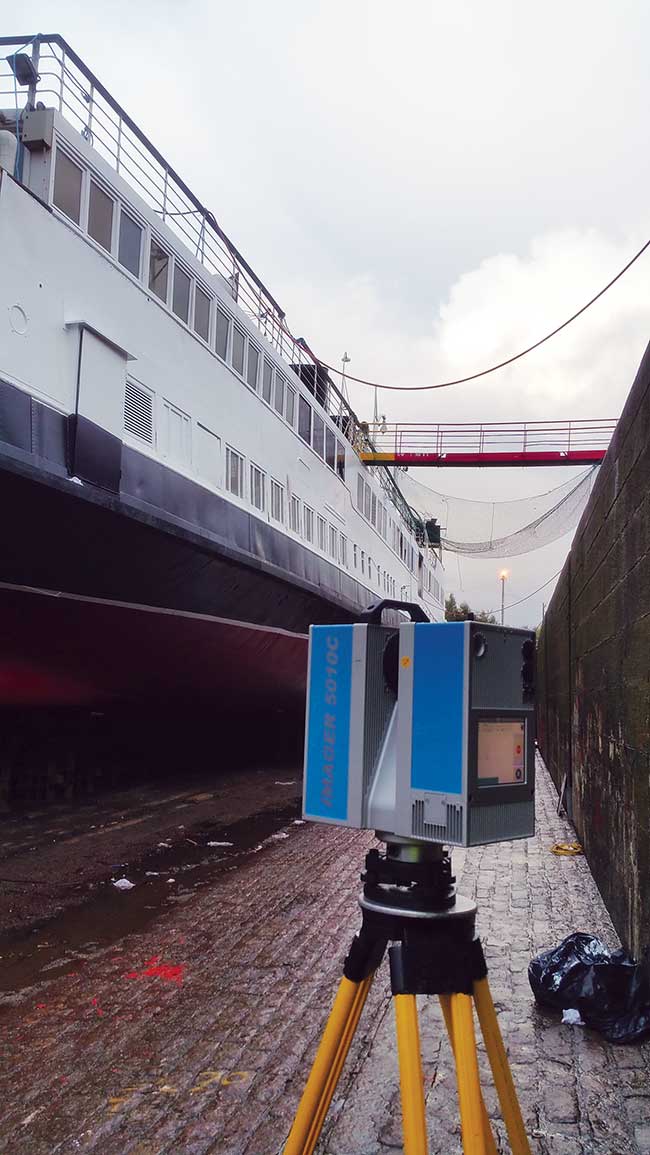Shipbuilders of the historic TS Queen Mary, the famous British turbine excursion steamer built in 1933, would probably be perplexed to learn that researchers hoping to restore the ship would be firing 1 million laser beams per second at her. But that is exactly what the School of Simulation and Visualisation at the Glasgow School of Art, in Glasgow, Scotland, did in order to create a precise 3D image, which will be compared to future scans to monitor rates of decay and damage over the years.
The school has been using laser scanning for over a decade, having scanned five Scottish World Heritage sites as well as five international sites, which include the Sydney Opera House and Mt. Rushmore. Through those projects they took an interest in Scotland’s industrial heritage and laser-scanned a giant cantilever crane in Nagasaki, Japan, that was designed and built in Glasgow.

3D laser-generated image of the TS Queen Mary.
When the TS Queen Mary was in dry dock only 25 miles away from the school in Greenock, Scotland, Al Rawlinson, head of data acquisition at the school, couldn’t pass up the chance to get a scan.
“The TS Queen Mary struck a chord with us. It’s a ship of historical importance in the U.K. and right here on our doorstep. The first time she was dry-docked in almost 20 years was an unmissable opportunity for us to get down there and scan her,” he said.
Laser scans provide the most complete and precise three-dimensional models; they are millions of times more accurate and detailed than photographs, and their precision can be marked down to the nearest millimeter.
While the school has access to several different laser scanners, Rawlinson chose to use a Zoller and Frohlich (Z+F) Imager 5010C with a maximum data acquisition rate of 1.016 million pixels per second.

Zoller and Frohlich Imager 5010C alongside the TS Queen Mary.
“Given the limited access I had to the ship in terms of time, I needed to use a scanner which was highly portable, very quick to use, and which could capture large amounts of high quality data very quickly,” said Rawlinson.
The precise measurements produced from the stand-alone laser scanner will be used to accurately repair and conserve the 1930s steamship.
The steamship, built by William Denny and Brothers Ltd. in Dumbarton, Scotland, was purchased last year by the charity Friends of TS Queen Mary; now, the group is raising £2 million to restore her.
“It’s fantastic to work with such a well-respected art school to marry old with new,” said Iain Sim, a Friends of TS Queen Mary trustee. “It’s a real credit to the quality of engineering that went into her, and we want to preserve that.”
The 3D images of the TS Queen Mary will be featured as part of an interactive exhibition planned for the ship once she is fully restored.